
June in zones 7-8 marks the transition from spring to full summer growing conditions. With soil temperatures consistently warm and the threat of frost long gone, gardeners in these moderate climate zones can take advantage of a wide planting window. The growing season here stretches comfortably into fall, allowing both warm-season crops and a second round of cool-season vegetables to thrive when planted in June.
I’ve selected 10 plants specifically suited for June planting in zones 7-8, focusing on varieties that handle summer heat while producing before fall temperatures arrive. These choices maximize your garden’s productivity during the height of summer and into the cooling days of autumn. From fast-growing beans to fall-harvested root vegetables, these plants will keep your garden—and kitchen—abundant with fresh produce.
So let’s dig into the perfect plants for your June garden in zones 7-8!
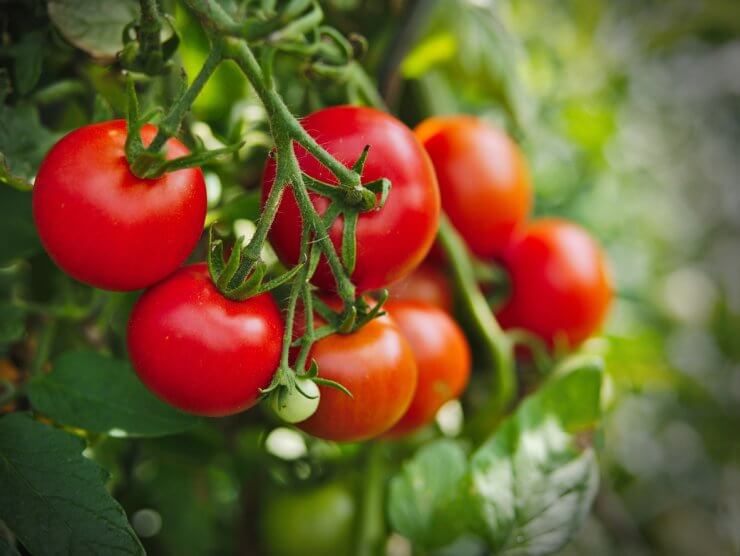
1. Heat-Resistant Tomatoes
While conventional wisdom says tomatoes should be planted earlier, June is actually an excellent time for a second planting in zones 7-8. These plants will produce a fall harvest when earlier tomatoes might be slowing down.
Recommended Varieties:
- ‘Arkansas Traveler’ (90 days) – Heirloom variety known for heat tolerance
- ‘Solar Fire’ (70 days) – Developed specifically to set fruit in high temperatures
- ‘Phoenix’ (72 days) – Reliable producer even during hot nights
- ‘Sun Master’ (75 days) – Disease-resistant variety that thrives in summer heat
Pro Tip: For June-planted tomatoes, provide afternoon shade using shade cloth or by planting on the east side of taller crops like corn. This reduces heat stress during the hottest part of summer. Mulch heavily with straw to keep soil temperatures moderate and moisture consistent. In zone 8, where heat can be intense, use white plastic mulch instead of black to reflect heat away from the roots.
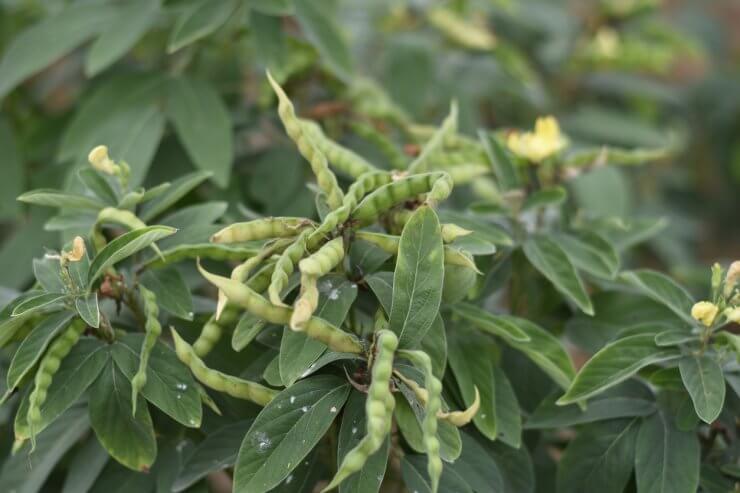
2. Southern Peas (Black-eyed Peas, Crowder Peas)
Southern peas are legumes that thrive in summer heat, making them perfect for June planting. They’re incredibly drought-tolerant and actually produce better in the warm conditions of zones 7-8.
Recommended Varieties:
- ‘California Blackeye No. 5’ (70 days) – Fast-maturing standard variety
- ‘Mississippi Silver’ (75 days) – Heat-tolerant heirloom with excellent flavor
- ‘Queen Anne’ (65 days) – Earlier variety good for zone 7
- ‘Zipper Cream’ (80 days) – Creamy-white peas that are easier to shell
Pro Tip: Unlike English peas, southern peas love hot weather and actually fix nitrogen in your soil as they grow. For the best crop, avoid over-fertilizing with nitrogen, which produces lush foliage at the expense of pea production. Instead, use a phosphorus-rich fertilizer to encourage flowering and pod development. In zone 8, you can succession plant southern peas every 3-4 weeks through July for continuous harvests into fall.
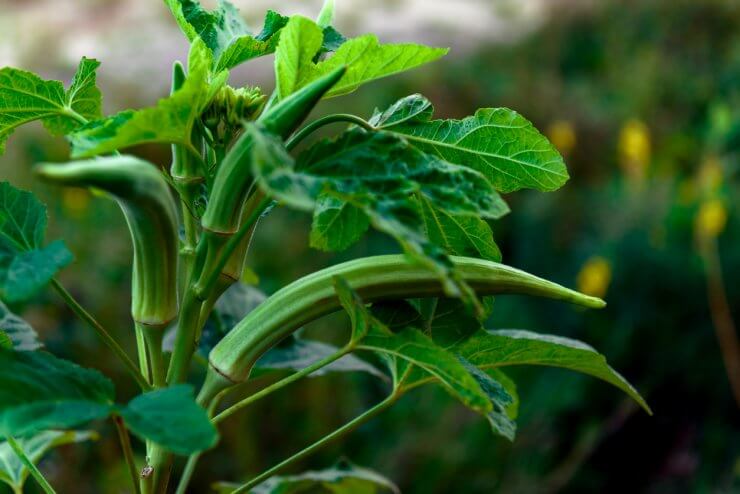
3. Okra
Okra is a quintessential summer crop that thrives in the heat and humidity common in zones 7-8. Planting in June allows for maximum production during the hottest months.
Recommended Varieties:
- ‘Clemson Spineless’ (56 days) – Industry standard with uniform pods
- ‘Burgundy’ (55 days) – Red pods and stems add garden beauty
- ‘Silver Queen’ (80 days) – Grows to 6 feet with tender white pods
- ‘Jambalaya’ (50 days) – Compact plants ideal for smaller gardens
Pro Tip: Soak okra seeds overnight before planting to speed germination in the June heat. For a continuous harvest, pick pods when they’re 2-3 inches long, as larger pods become woody. Picking every 2-3 days actually increases production. When harvesting, wear gloves and long sleeves to avoid skin irritation from the plant’s tiny spines. In zone 7, select faster-maturing varieties and use black plastic mulch to increase soil temperature.
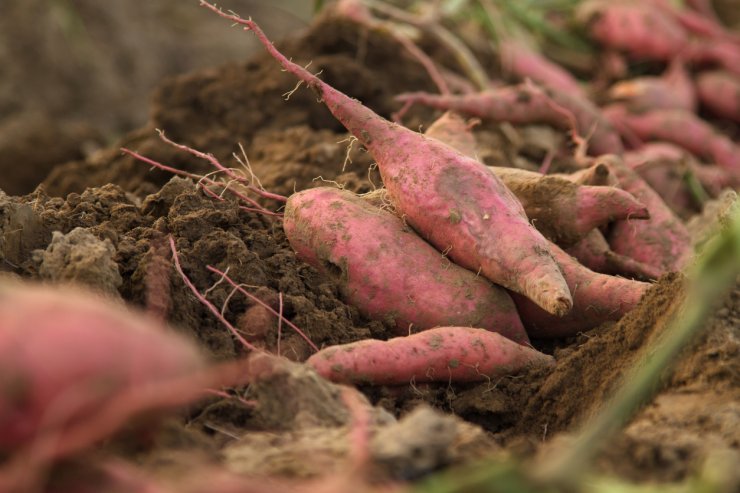
4. Sweet Potatoes
June is ideal for planting sweet potatoes in zones 7-8, giving them the long, hot growing season they need to develop their sugary tubers.
Recommended Varieties:
- ‘Beauregard’ (100 days) – High-yielding orange flesh variety
- ‘Georgia Jet’ (90 days) – Earlier maturity makes it good for zone 7
- ‘Purple’ (100 days) – Vibrant purple flesh, rich in antioxidants
- ‘O’Henry’ (110 days) – White-fleshed variety with excellent storage qualities
Pro Tip: Plant sweet potato slips at an angle, with only the top leaves above ground, for better root development. Create a slight mound for planting to ensure good drainage in case of summer downpours. Unlike regular potatoes, sweet potatoes benefit from heat, but the initial transplants are fragile—provide shade for the first week after planting. In zone 8, you can plant as late as mid-July and still harvest before frost.
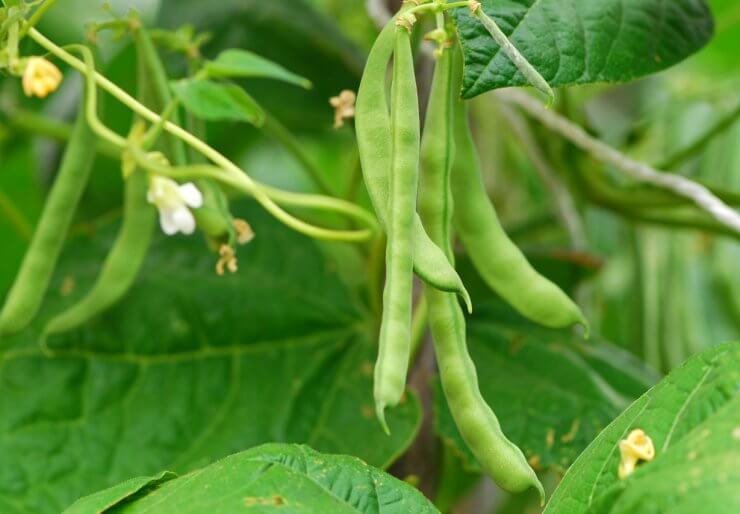
5. Bush Beans
Bush beans planted in June will produce a harvest before the intense heat of late summer, providing fresh beans when spring-planted varieties may be finished.
Recommended Varieties:
- ‘Provider’ (50 days) – Reliable producer in hot weather
- ‘Contender’ (45 days) – Very early maturing for quick harvest
- ‘Roma II’ (53 days) – Italian flat bean excellent for preserving
- ‘Royal Burgundy’ (55 days) – Purple pods that turn green when cooked
Pro Tip: For June plantings, select a location that receives morning sun but afternoon shade to reduce heat stress. To prevent fungal issues common in the humidity of zones 7-8, space plants farther apart than spring plantings (about 6 inches) to improve air circulation. Water at the base of plants in the morning to keep foliage dry. For zone 8 gardeners, try setting up a temporary shade structure during the hottest weeks to extend production into August.
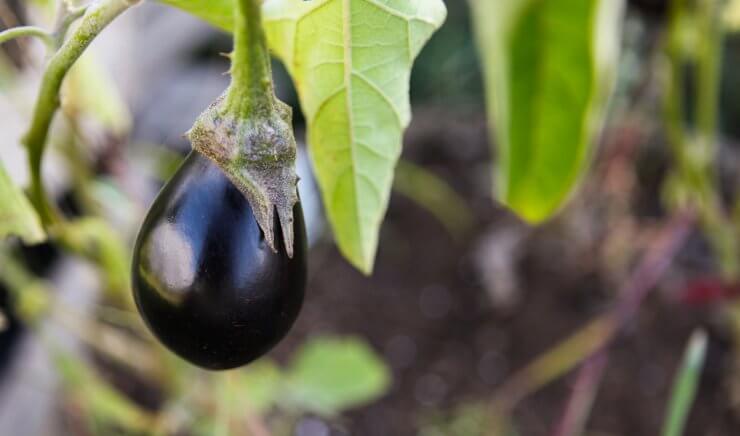
6. Eggplant
Eggplant loves heat, making June an excellent time to plant in zones 7-8 where the growing season extends well into fall.
Recommended Varieties:
- ‘Black Beauty’ (80 days) – Classic large oval fruit
- ‘Ichiban’ (60 days) – Japanese type with slender fruit, earlier harvest
- ‘Fairy Tale’ (65 days) – Compact plants with striped miniature fruits
- ‘Florida Market’ (85 days) – Heat-tolerant variety bred for southern conditions
Pro Tip: Eggplants are heavy feeders—work compost and a slow-release fertilizer into the soil before planting June transplants. For flea beetle protection (a common eggplant pest), use floating row covers until plants begin flowering. Support plants with stakes or cages, as June-planted eggplants often grow larger and produce heavier yields than spring-planted ones due to immediate heat exposure. In zone 7, select faster-maturing varieties if planting in late June.
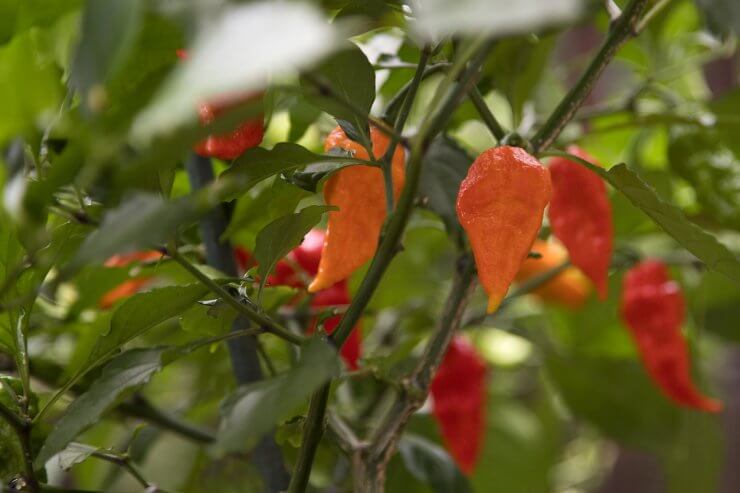
7. Peppers (Hot and Sweet)
Peppers thrive in the consistent warmth of zones 7-8, and June planting takes advantage of perfectly heated soil for strong root development.
Recommended Varieties:
- Sweet: ‘California Wonder’ (75 days) – Classic bell pepper
- Sweet: ‘Carmen’ (60 days) – Italian bull’s horn type, earlier maturity
- Hot: ‘Jalapeño’ (70 days) – Medium heat, versatile use
- Hot: ‘Serrano’ (80 days) – Slender, very hot peppers for authentic salsa
Pro Tip: For better production in summer heat, spray pepper flowers with a solution of 1 tablespoon Epsom salts dissolved in 1 gallon of water. This provides magnesium that helps with fruit set during high temperatures. As with tomatoes, providing some afternoon shade will help peppers set fruit during the hottest part of summer. In zone 8, where extreme heat can be an issue, try planting peppers near taller vegetables like corn or sunflowers for natural afternoon shade.
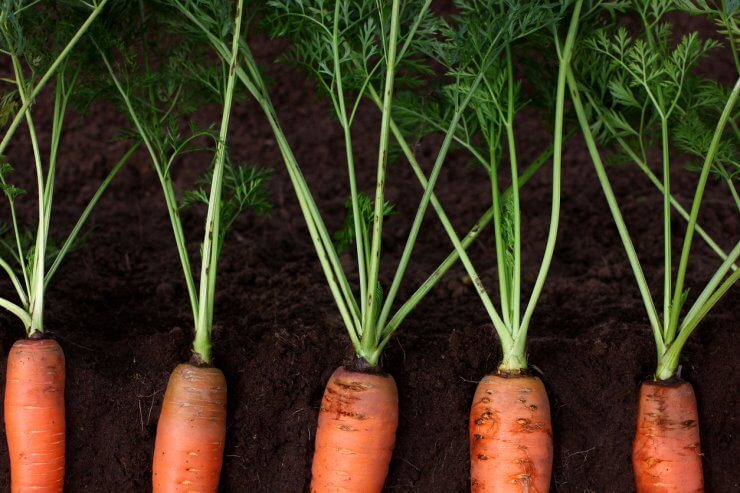
8. Carrots (for Fall Harvest)
June-planted carrots in zones 7-8 will mature during cooling fall temperatures, resulting in sweeter, more flavorful roots.
Recommended Varieties:
- ‘Napoli’ (58 days) – Early maturing with excellent sweet flavor
- ‘Danvers 126’ (75 days) – Heat-tolerant variety good for heavier soils
- ‘Scarlet Nantes’ (65 days) – Sweet, crisp carrot that performs well in summer planting
- ‘Yaya’ (60 days) – Hybrid with exceptional sweetness
Pro Tip: June-planted carrots face the challenge of hot soil for germination. Create a microclimate for successful germination by laying a board or wet burlap over the seeded row, checking daily and removing once sprouts appear. Alternatively, create a shade structure using lattice or row cover until seedlings are established. Plant seeds slightly deeper (about 1/2 inch) than spring plantings to access cooler, moister soil. In zone 8, where heat is more intense, plant in the evening and water thoroughly.

9. Pumpkins
June is the perfect time to plant pumpkins in zones 7-8 for a Halloween harvest, providing just the right amount of growing time.
Recommended Varieties:
- ‘Jack-O-Lantern’ (110 days) – Classic medium-sized carving pumpkin
- ‘Sugar Pie’ (100 days) – Smaller variety excellent for baking
- ‘Howden’ (115 days) – Large, uniform orange fruits ideal for carving
- ‘Jarrahdale’ (100 days) – Blue-skinned variety with decorative appeal
Pro Tip: Pumpkins need plenty of space and nutrients. Before planting, create mounds enriched with compost and a balanced organic fertilizer. To discourage squash vine borers (a common pest in zones 7-8), wrap the main stem with aluminum foil from soil level up about 3 inches. For larger pumpkins, limit each plant to 2-3 fruits by pinching off additional female flowers (identifiable by the small round swelling behind the blossom). In zone 7, select varieties with 100 days or less to maturity for guaranteed harvest before frost.
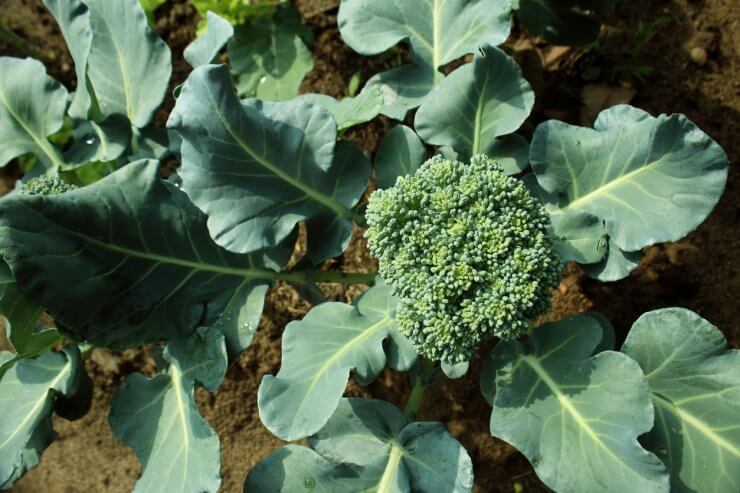
10. Fall Brassicas (Broccoli, Cabbage, Cauliflower)
June is the time to start seeds for fall harvests of these cool-weather crops in zones 7-8. They’ll mature as temperatures cool in autumn.
Recommended Varieties:
- Broccoli: ‘Arcadia’ (63 days) – Heat-tolerant variety with good disease resistance
- Broccoli: ‘Green Magic’ (57 days) – Earlier maturity for zone 7
- Cabbage: ‘Ruby Perfection’ (85 days) – Red cabbage with excellent flavor
- Cauliflower: ‘Snow Crown’ (68 days) – Self-blanching, reliable producer
Pro Tip: Start these seeds in containers in a partially shaded location rather than direct-seeding in the hot June garden. Keep seedlings consistently moist and transplant to the garden in late July or early August when slightly cooler temperatures prevail. To protect young transplants from cabbage moths, use floating row covers or plant near aromatic herbs like thyme and rosemary, which can confuse pests. In zone 8, where heat persists longer, select bolt-resistant varieties and provide afternoon shade for seedlings.
June Garden Chores for Zones 7-8
Beyond planting, June requires attention to established plants and preparation for the intense summer ahead:
- Mulch heavily around all plants to conserve moisture and suppress weeds
- Harvest spring crops promptly to make room for summer plantings
- Set up irrigation systems – soaker hoses or drip lines are most efficient
- Monitor for pests daily – summer heat accelerates their life cycles
- Prune spring-flowering shrubs after they’ve finished blooming
- Support heavy-fruiting plants like tomatoes with sturdy cages or stakes
- Harvest herbs regularly to encourage continued production
- Start collecting seeds from spring crops for next year’s garden
- Begin succession planting of heat-tolerant greens like Swiss chard
- Provide afternoon shade for heat-sensitive crops
June planting in zones 7-8 takes advantage of your long growing season, allowing you to maximize garden production through multiple plantings. These ten crops are specifically suited to thrive when planted during this transitional month, providing fresh harvests from summer through fall.
What are your favorite vegetables to plant in June? Are you trying any new varieties this year? Let me know in the comments below!


 Previous
Previous


This is very good,it helps to have more learning activities